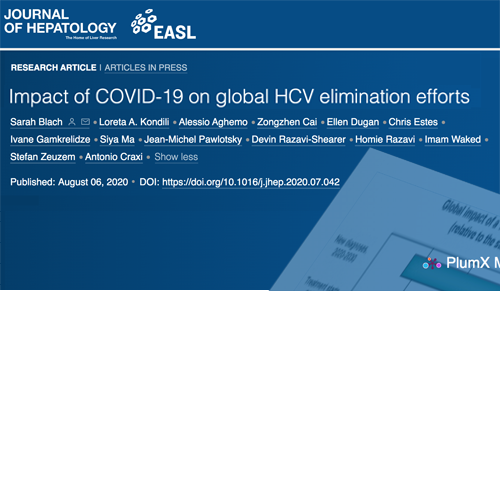Summary
Background & Aims
Coronavirus disease 2019 (COVID-19) has placed a significant strain on national healthcare systems at a critical moment in the context of hepatitis elimination. Mathematical models can be used to evaluate the possible impact of programmatic delays on hepatitis disease burden. The objective of this analysis was to evaluate the incremental change in HCV liver-related deaths and liver cancer, following a 3-month, 6-month, or 1-year hiatus in hepatitis elimination programs.
Methods
Previously developed models were adapted for 110 countries to include a status quo or ‘no delay’ scenario and a ‘1-year delay’ scenario assuming significant disruption in interventions (screening, diagnosis, and treatment) in the year 2020. Annual country-level model outcomes were extracted, and weighted averages were used to calculate regional (WHO and World Bank Income Group) and global estimates from 2020 to 2030. The incremental annual change in outcomes was calculated by subtracting the ‘no-delay’ estimates from the ‘1-year delay’ estimates.
Results
The ‘1-year delay’ scenario resulted in 44,800 (95% uncertainty interval [UI]: 43,800–49,300) excess hepatocellular carcinoma cases and 72,300 (95% UI: 70,600–79,400) excess liver-related deaths, relative to the ‘no-delay’ scenario globally, from 2020 to 2030. Most missed treatments would be in lower-middle income countries, whereas most excess hepatocellular carcinoma and liver-related deaths would be among high-income countries.
Conclusions
The impact of COVID-19 extends beyond the direct morbidity and mortality associated with exposure and infection. To mitigate the impact on viral hepatitis programming and reduce excess mortality from delayed treatment, policy makers should prioritize hepatitis programs as soon as it becomes safe to do so.
Lay Summary
COVID-19 has resulted in many hepatitis elimination programs slowing or stopping altogether. A 1-year delay in hepatitis diagnosis and treatment could result in an additional 44,800 liver cancers and 72,300 deaths from HCV globally by 2030. Countries have committed to hepatitis elimination by 2030, so attention should shift back to hepatitis programming as soon as it becomes appropriate to do so.

